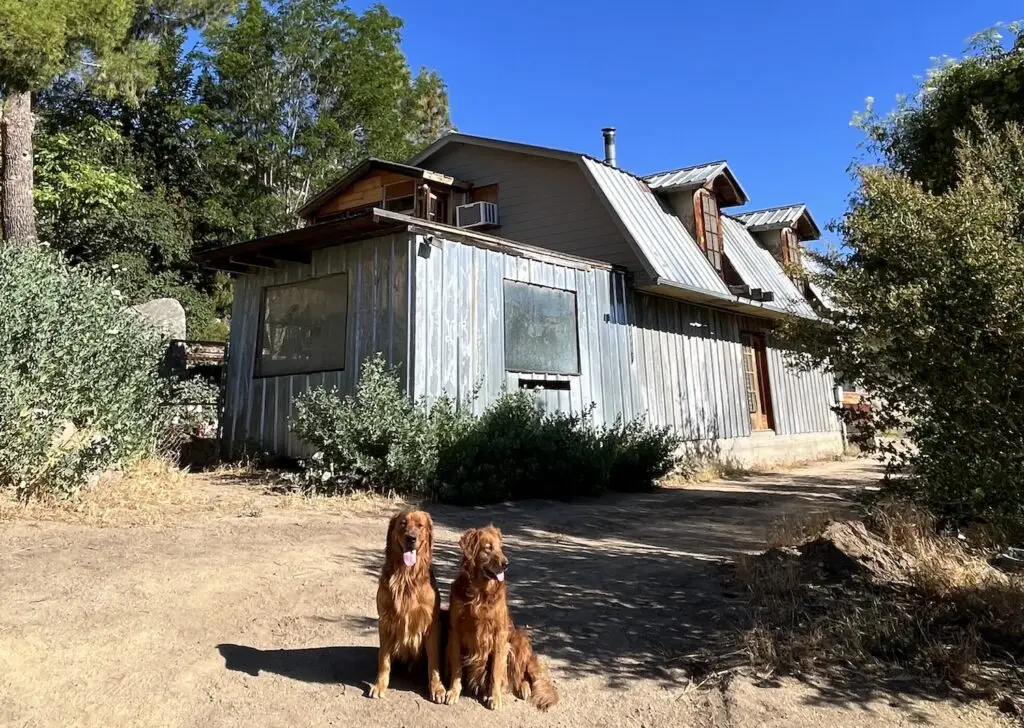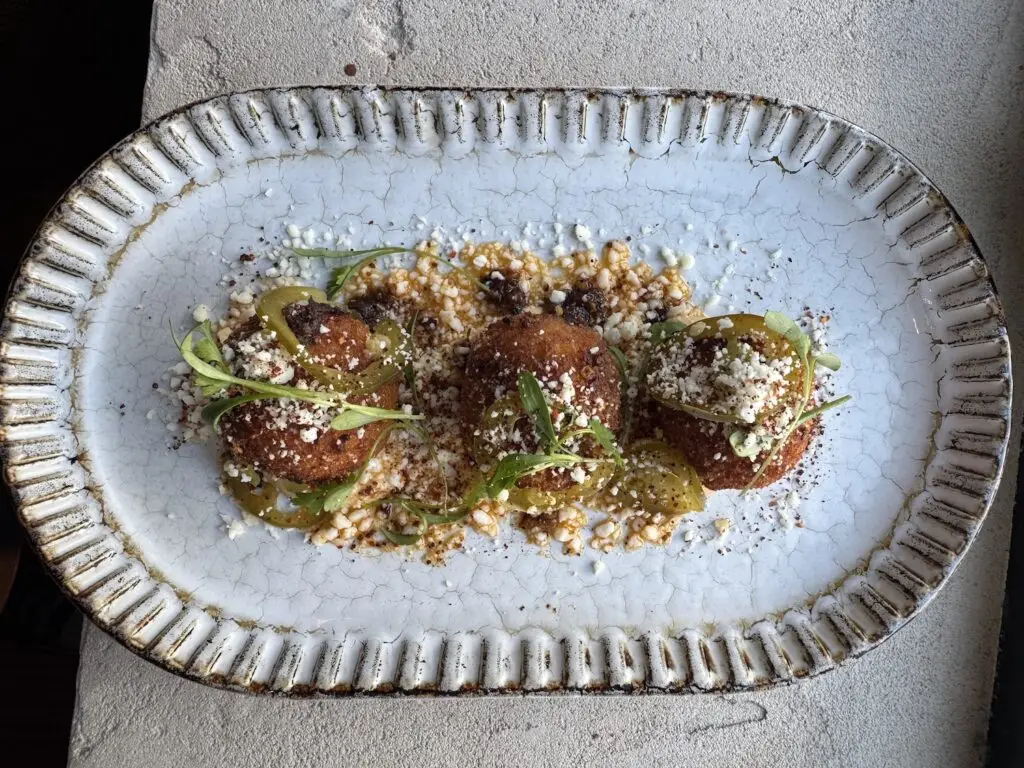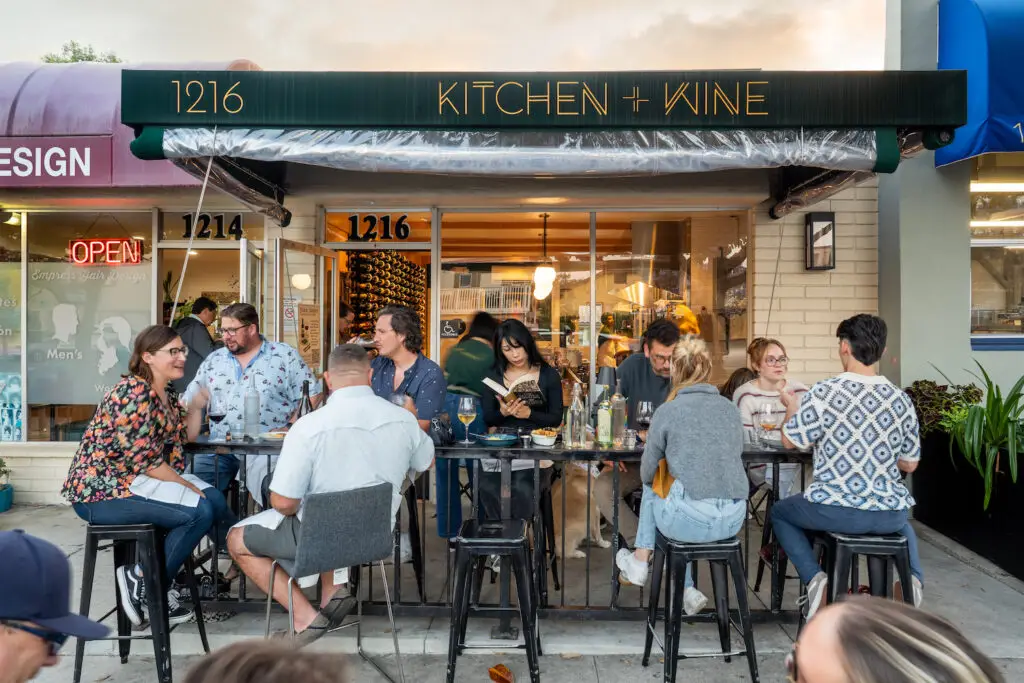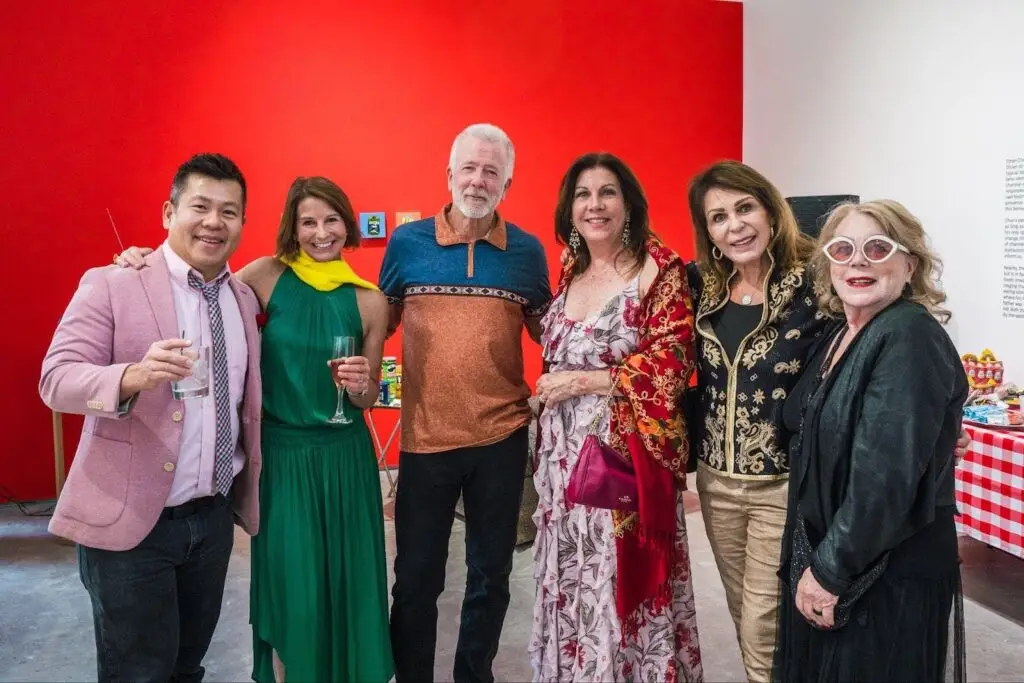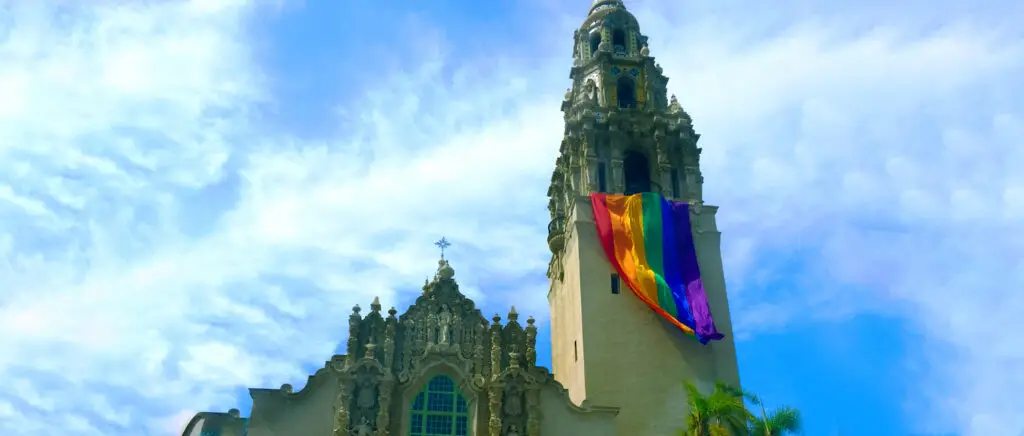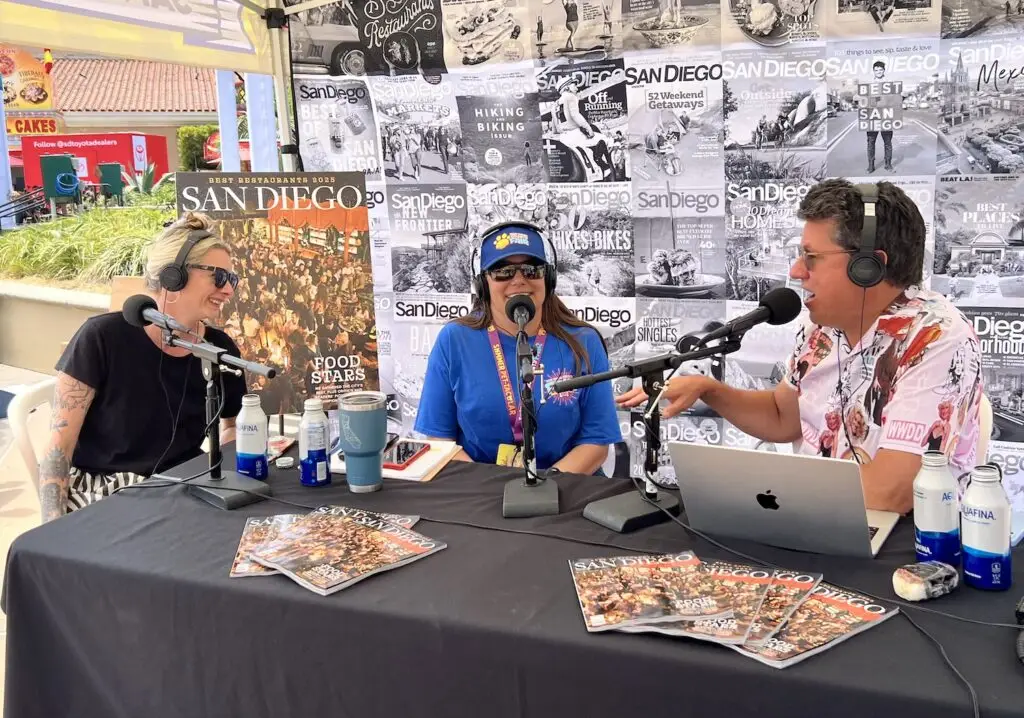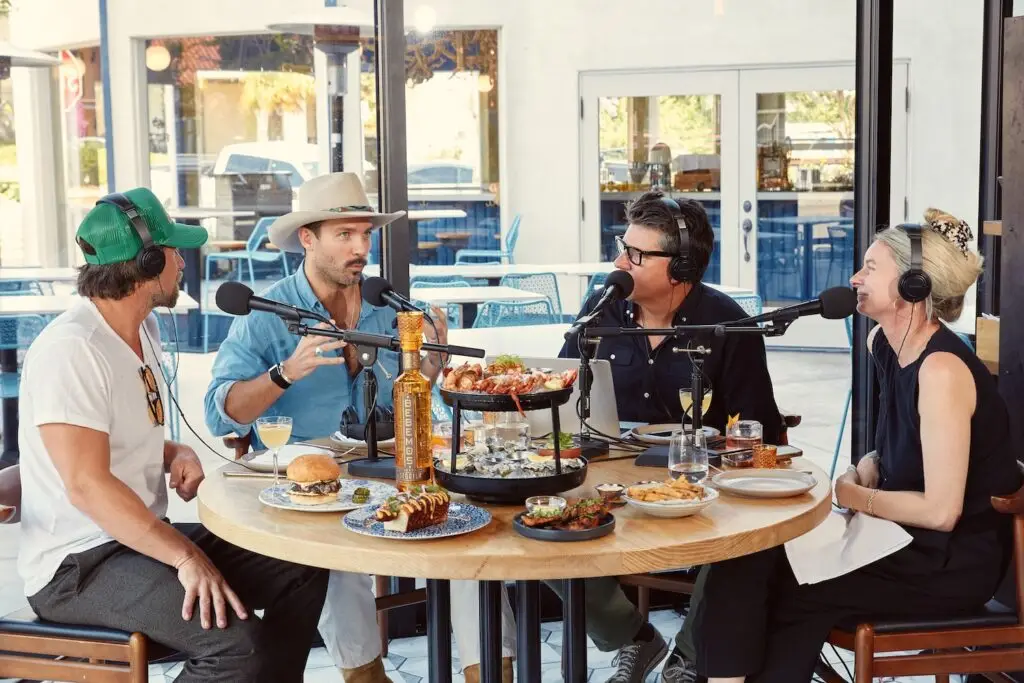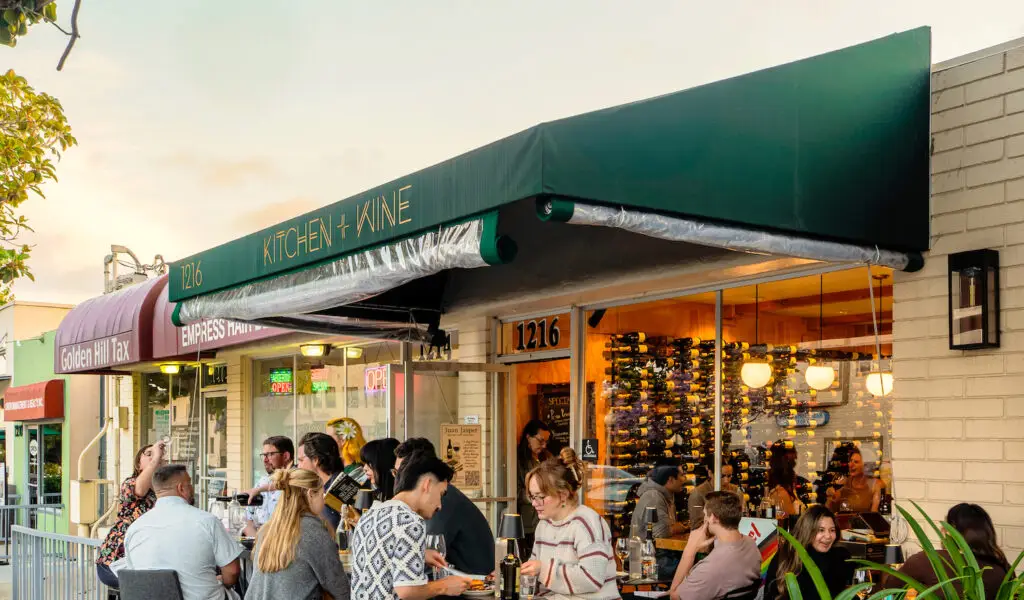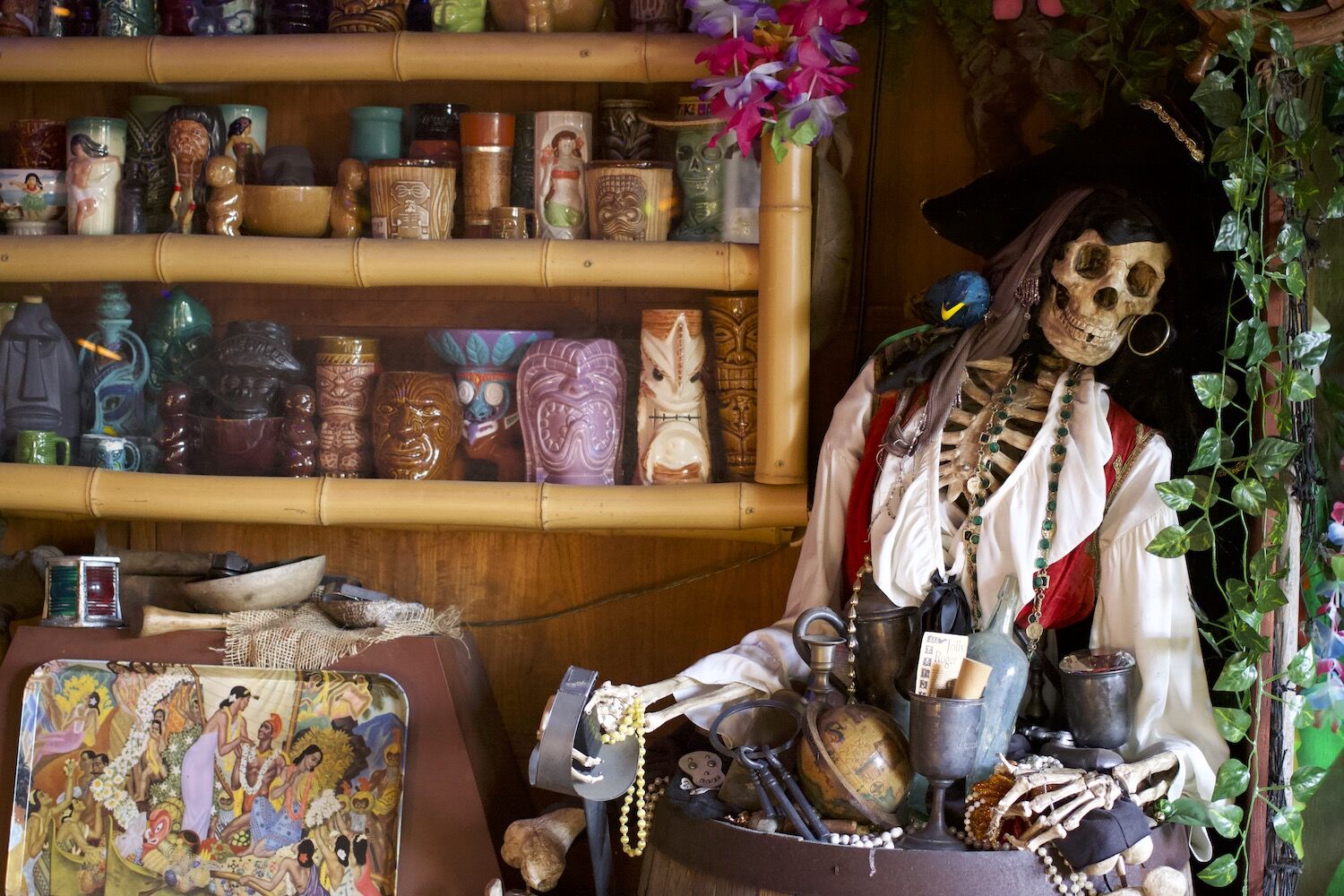
The Lava-Flow-Inn is like a haunted pirate ship full of vintage tiki treasures
Photo Credit: Mateo Hoke
Matt Reese has a secret. The drive to his house goes through a stretch of University Avenue where beauty outlets, auto shops, and heavy equipment rentals are the norm, with a raucous din of traffic and commerce filling the neighborhood. But venture into his steep backyard, and all that disappears. Down some 40-odd wooden steps you’re faced with a tunnel of sorts—an old rowboat suspended upside down, serving as the roof. Duck through, and suddenly the light is different. The air, sticky. Unseen birds whistle jungle songs. Approximately 1,800 desiccated coconuts littering the ground. And while you’re technically still on his property, you’re not really in his backyard anymore. You’re somewhere else.
“It’s an escape,” he says. “It’s like a drug.” Matt has spent years of his life and tens of thousands of dollars building and decorating his backyard tiki bar, the Lava-Flow-Inn. And while not exactly a secret—he’s been known to host parties for hundreds of guests—his bar evokes a kind of hushed reverence. Even with satellite view, you can’t really tell what he’s got hidden back there.
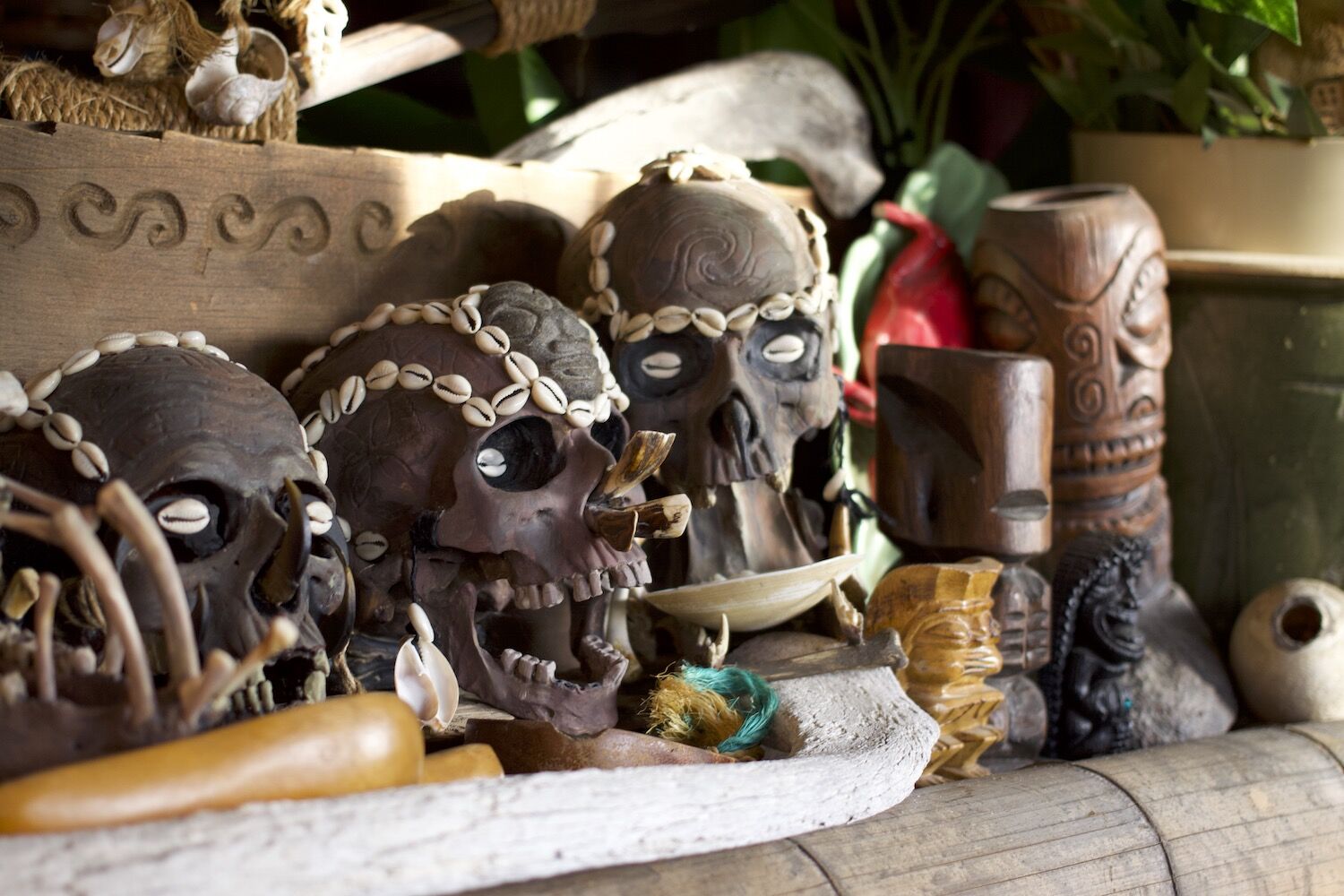
Matt Reese created many of the decorative skulls that adorn his bar
Photo Credit: Mateo Hoke
Built on a series of staggered decks under a canopy of rubber trees, the place is a maximalist wonderland of vintage décor, recycled materials, and Matt’s own craftsmanship, along with weathered tikis and island-inspired sculptures from Escondido artist Bosko Hrnjak. Think haunted pirate ship meets jungle hut, complete with a full bar. “It’s an obsession,” Matt says, holding one of the hundred-plus tiki mugs he keeps on display. “You can create your own tropical paradise in whatever manner you like. With mine, I wanted a sense of danger. Kinda creepy, yet really fun. I want people to enjoy themselves and be taken away.”
Matt built much of his bar by hand, using recycled materials he scavenged while working maintenance at the Salk Institute. After collecting and storing dumpster scores for years, he amassed a shed full of rescued relics that came in handy. Old, solid-wood cubicles became the ceiling. A tall, metal paper towel dispenser serves as a horizontal fire pit in an outdoor table. A water tank flipped sideways and split down the middle is now a huge grill. An old recovery tank moonlights as a smoker.
“This bar top is one-and-[a]-half-inch [thick] solid old-growth teak,” he says. “One of the original Salk Lab benches. It’s probably worth thousands. I didn’t have money, so I had to get creative.”
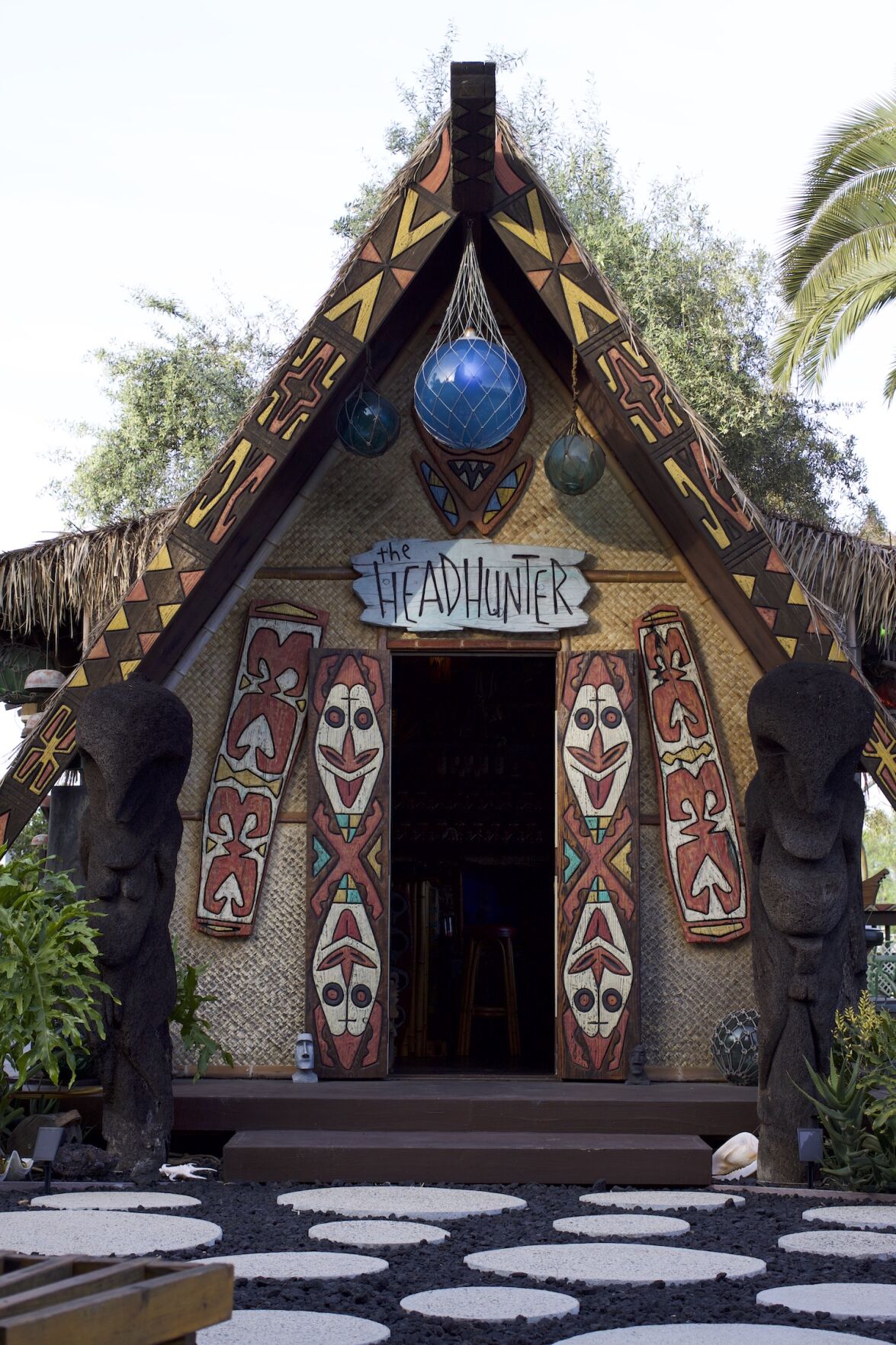
The Headhunter is perhaps the crown jewel of backyard tiki in San Diego
Photo Credit: Mateo Hoke
Matt is part of a long line of Southern Californians—dating back to the 1930s—who have been captivated by all things tiki, but he and others like him have taken it a step further, building their own private tiki temples full of nautical castoffs, DIY doodads, and Pacific cultural imagery. And booze. Plenty of booze.
These backyard bars might be simple affairs with rotting boat regalia and store-bought island adornments, or they might essentially be small cultural heritage museums, full of one-of-a-kind pieces rescued from thrift stores and dumpsters outside of restaurant remodels—relics from a chapter of American history that was nearly forgotten.
The tiki scene we know today has its earliest roots in Great Depression–era LA, but it didn’t truly take off until after WWII when American soldiers returning from war in the Pacific helped spur demand for rum-soaked, faux island escapes. But with the Vietnam War and a new wave of social unrest, tiki largely fell out of favor. The fad had faded. In the following decades, many tiki collections ended up in the trash heap of history.
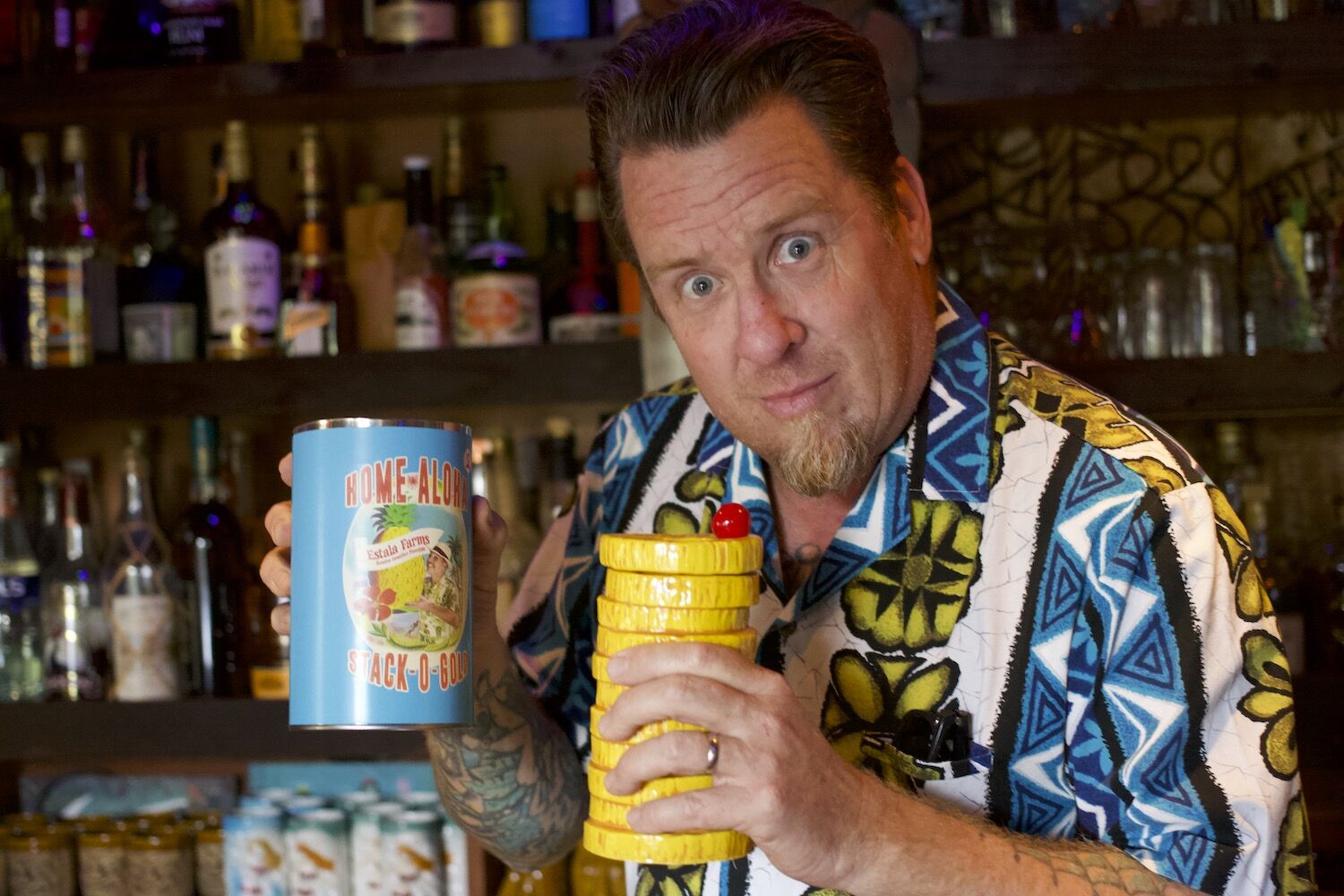
Matt Reese poses with a ceramic canned pineapple tiki mug he helped create
Photo Credit: Mateo Hoke
“It’s hard to believe now, but in the 1980s, tiki didn’t exist, basically,” says Sven Kirsten, the so-called “godfather of tiki.” The LA-based German transplant has written numerous books on the subject.
“It was completely erased from the surface,” he says. But with the continued rise of cocktail culture and a revived appreciation for American mid-century modern style and design, a new wave of tiki lovers have found one another. High-dollar tiki bars full of Polynesian pop are opening with abandon, and San Diego’s annual Tiki Oasis festival draws thousands each year to Town & Country Resort.
With this revived popularity has come questions about appropriation that are worth asking. As I understand it, tiki aims to recreate a mythological place that doesn’t exist, using objects and aesthetics found in many Pacific cultures. Begin to unpack that, and you’re faced with many more layers. Tiki is a deep well. There are lots of threads to unravel, lots of palm fronds to unbraid.
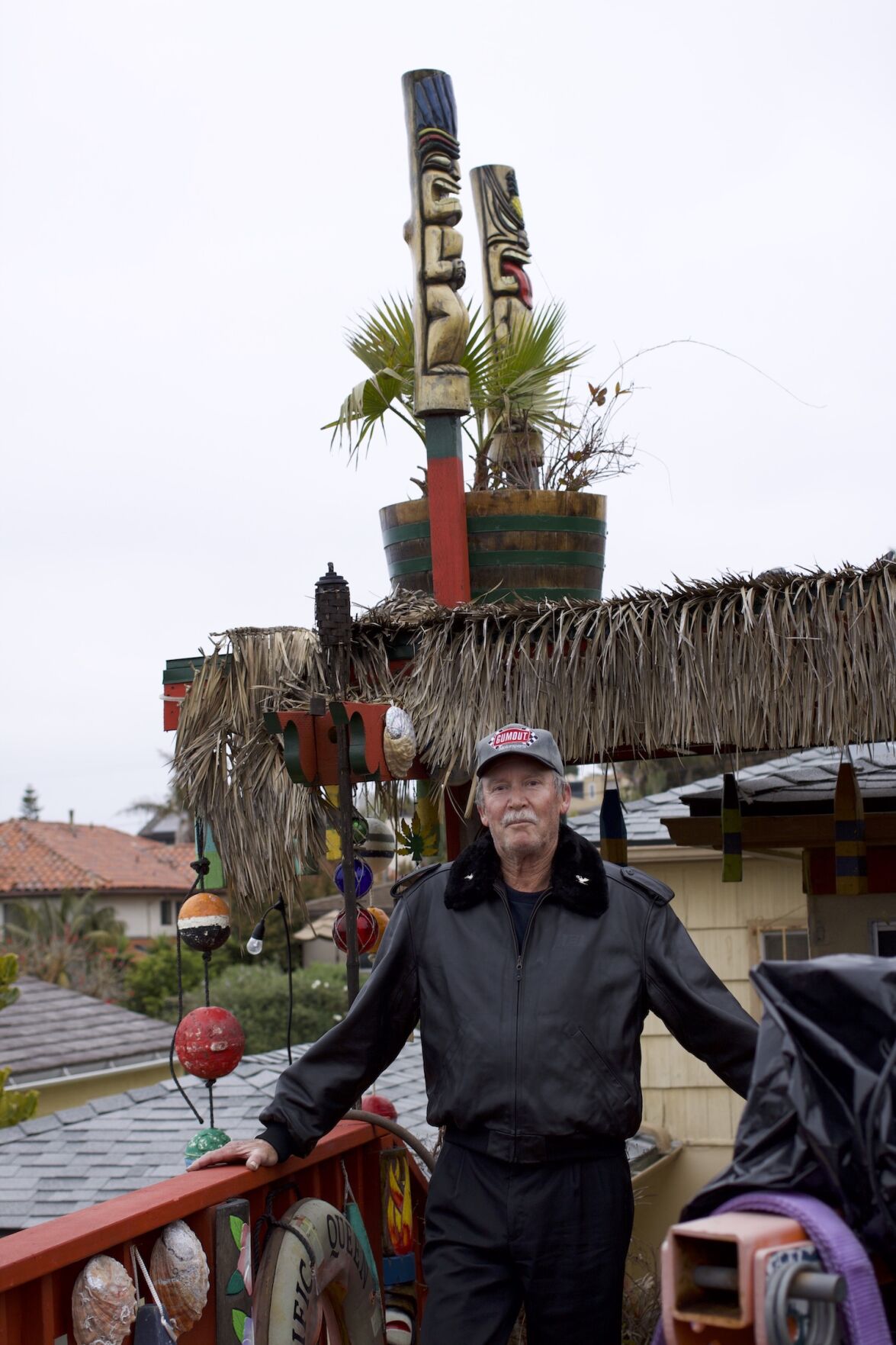
Chris O’Leary on his Kokomo Deck
Photo Credit: Mateo Hoke
In tiki it seems, as in life, there are truths but no truth.
Out in OB, I find Chris O’Leary’s backyard bar simply by walking by. Palm thatching peeking over his second story-deck got my Spidey-senses tingling, so I invited myself over. The house is one of those weathered OB minimal-traditionals with a view, which Chris’ parents bought in the late ’50s for $17,200. Inside, nautical collectables from the Queen Mary hide in corners, and a fleet of huge model ships dominates the living room, some larger than my wingspan.
But OB is all about being outside. Chris’ bar, which he calls the Kokomo Deck, is a DIY project he started putting together in 2020. So far, two palm-topped pagoda frames built by his buddy Dave Palmer provide the shade, with old buoys, life preservers, carved masks, and neon beer signs hanging everywhere.
“I try to keep it South Pacific and nautical-themed,” he tells me. “That’s the motif.”
His main statement tiki statue is from Fiji, he says, and is probably 90 years old, but he refinished it, so it looks refreshed and alive. The bar itself came from the legendary Bali Hai restaurant on Shelter Island. It’s unique, but the view does the heavy lifting up here.
Chris was a mechanic and plumber. His buddy Dave, an artist and builder. They seem to mostly drink large cans of Budweiser, at least until the gray days have passed and they break out the sno-cone machine, or as Dave says, the “bro-cone” machine. Chris estimates he’s spent upwards of $18,000 on the Kokomo Deck so far. When I ask why a tiki bar, they act as though I’m a fool.
“Nobody has a bad time at a tiki bar, bro,” Dave says. Back east, about a mile away from the Lava-Flow-Inn, Ilze and Jonny Guilmet invite me into a mid-century El Cerrito home that as soon as I enter has me thinking maybe a tornado picked it up in 1963 and dropped it, undisturbed, in 2023. The place is a time capsule. Every inch is vintage, from the couches to the clocks.
With the exception of Jonny’s tattoo sleeves, the couple could play the neighbors in an episode of Mad Men. Antique and vintage dealers for more than two decades, they’ve been able to collect clothes and original pieces that match their curated aesthetic. But the crown jewel of their one-and-a-half acre property is The Headhunter, a 17-foot, A-frame tiki bar they built in 2017. The bar anchors their backyard, just beyond the pool, also their addition. The entire backyard is strewn with tiki carvings and maritime riggings with endless details that could easily go unnoticed.
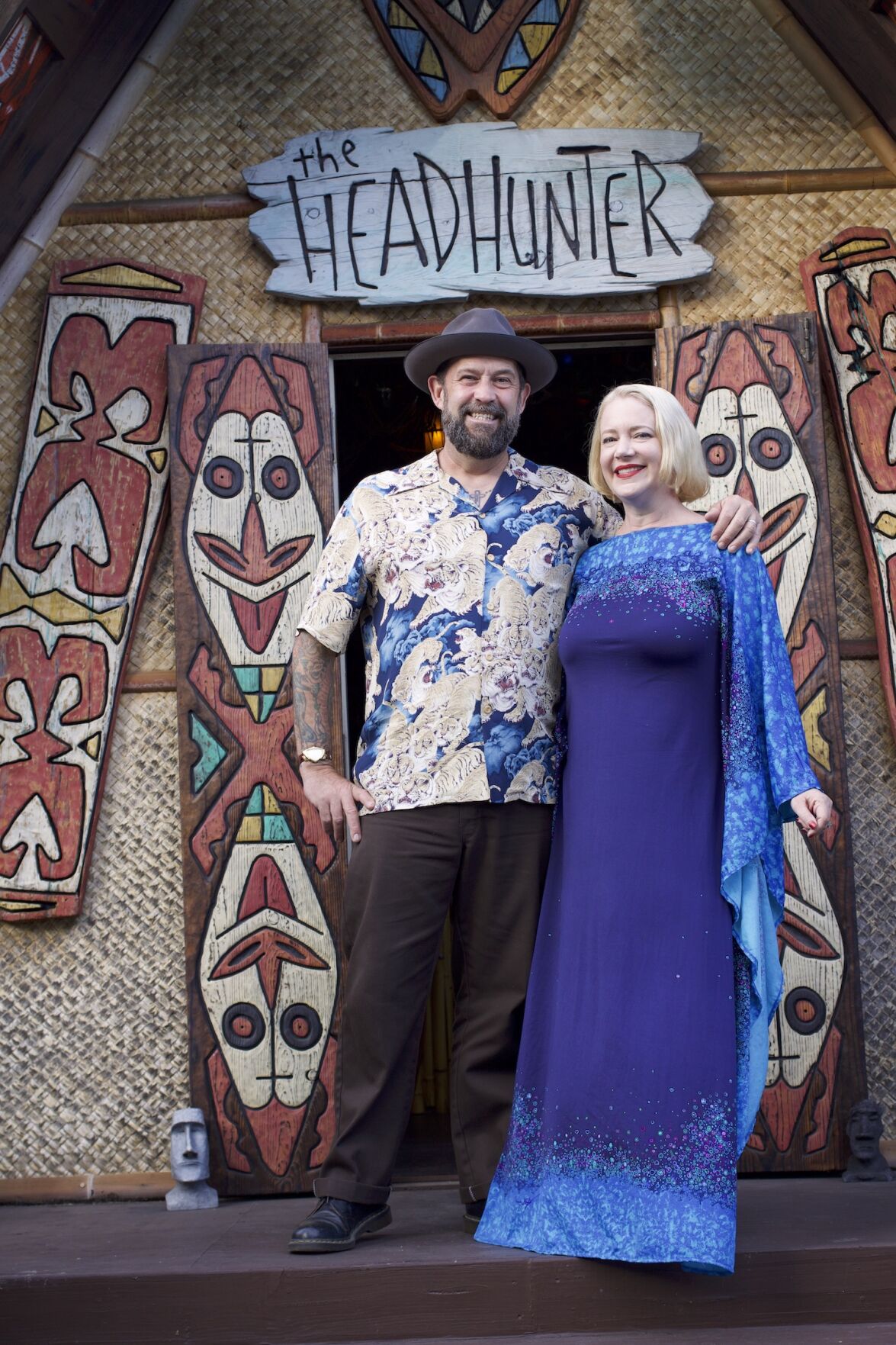
Johnny and Ilze Guilmet outside The Headhunter
Photo Credit: Mateo Hoke
The Headhunter is a statement. Guarded by two six-foot palm tiki sculptures originally from Vanuatu, the structure is eye-catching from a distance, but inside, it’s another world. The ceiling hangs low, packed with lanterns and inflated porcupine fish lit from within, sculptures large and small guarding the bar. Shrunken head decorations, a black velvet sunset painting, rattan, bamboo. A custom booth.This is not your grandparent’s basement bar.
Tiki, I’m learning, is more than a trend. It’s a way of life. It’s the period clothes, the cars, the art, the architecture, the music. It’s a way of interacting with the world and escaping it at the same time.
When I ask them what The Headhunter cost to build, the couple shake their heads, baffled. Maybe $25,000 for the structure, they tell me.
“But it’s 25 years worth of collection,” Ilze says.
“Yeah, you could search eBay everyday for 10 years and not recreate that collection,” Jonny adds.
Raised in OB and Point Loma, Jonny grew up going to Shelter Island, with its Polynesian theme and mid-century architecture. The couple’s immense collection includes a wall of ceramic Mr. Bali Hai tiki mugs—a bone-through-the-nose figure the restaurant describes as “modeled after early headhunters of the South Pacific”— as well as rare Mr.
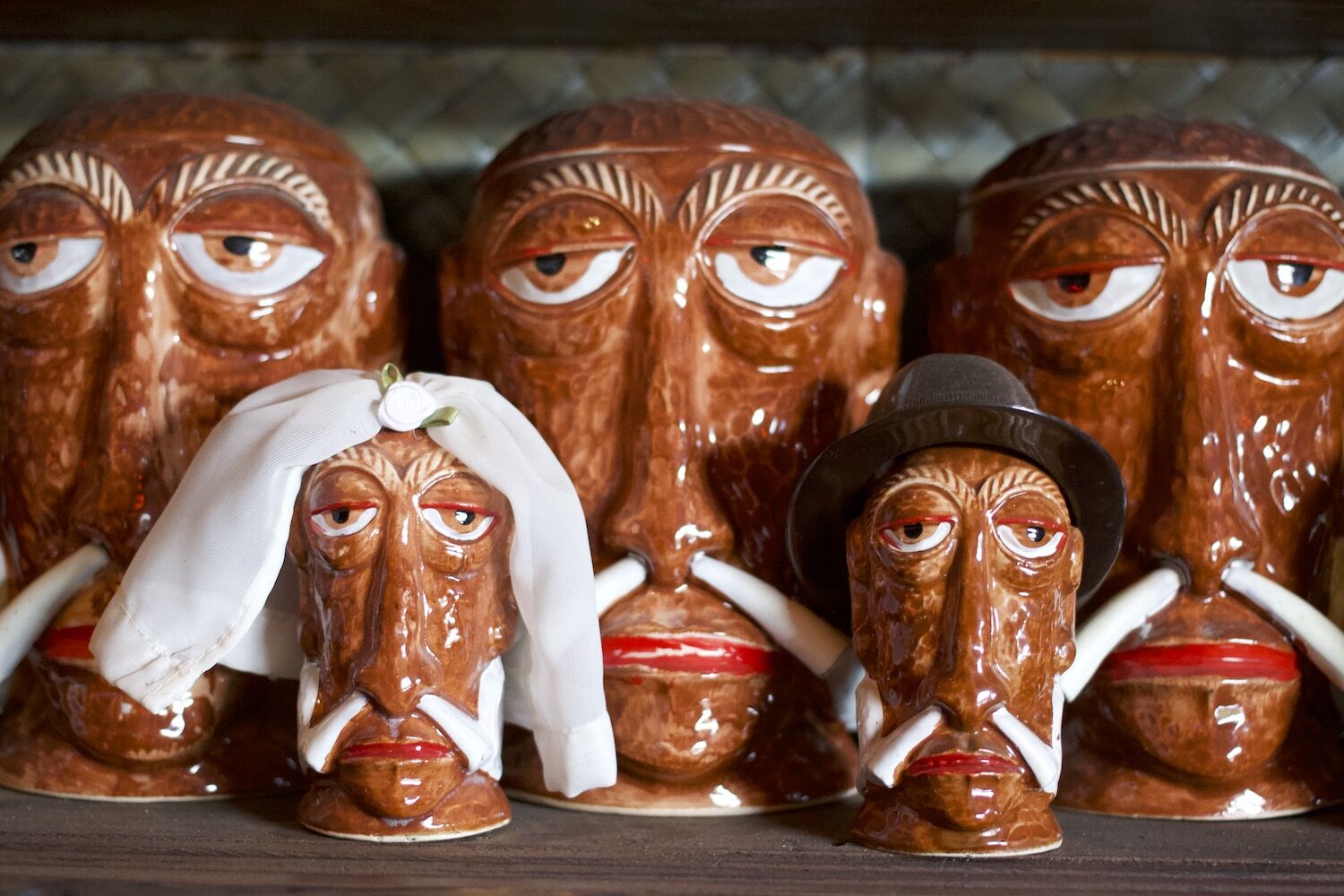
A small sampling of The Headhunter’s paraphernalia from the legendary Bali Hai restaurant, including the cake toppers the Guilmets used on their wedding cake
Photo Credit: Mateo Hoke
Bali Hai lighters and salt-and-pepper shakers, two of which the couple used as cake toppers at their wedding, dressed as bride and groom.
“Every home bar is very personal,” Ilze says.
“Ours is Polynesian, South Pacific, nautical, kinda taboo-ish” Jonny adds. “It’s cool, it’s colorful. We’ve also got four real human skulls in here.”
In Matt Reese’s bar, it’s the same. Everywhere you look, something looks back. A skull, a mug, a mask. The space is dense with objects hanging from the ceiling, the walls covered with carvings and pirate loot.
“I’ve got three human skeletons in this room, and people don’t even realize,” he says. (His are fake.)
It’s dizzying to take in, but it’s all a deliberate part of the allure. Matt has his bar dialed in down to the music inside—and jungle sounds outside playing on repeat from a thrifted CD player. Not to mention the 10-foot tiki of mysterious origin that greets you when you walk in.
PARTNER CONTENT
“A tiki bar has to have a tiki,” he tells me. “If you don’t have a tiki, then it’s not a tiki bar.” So maybe that’s his secret.
